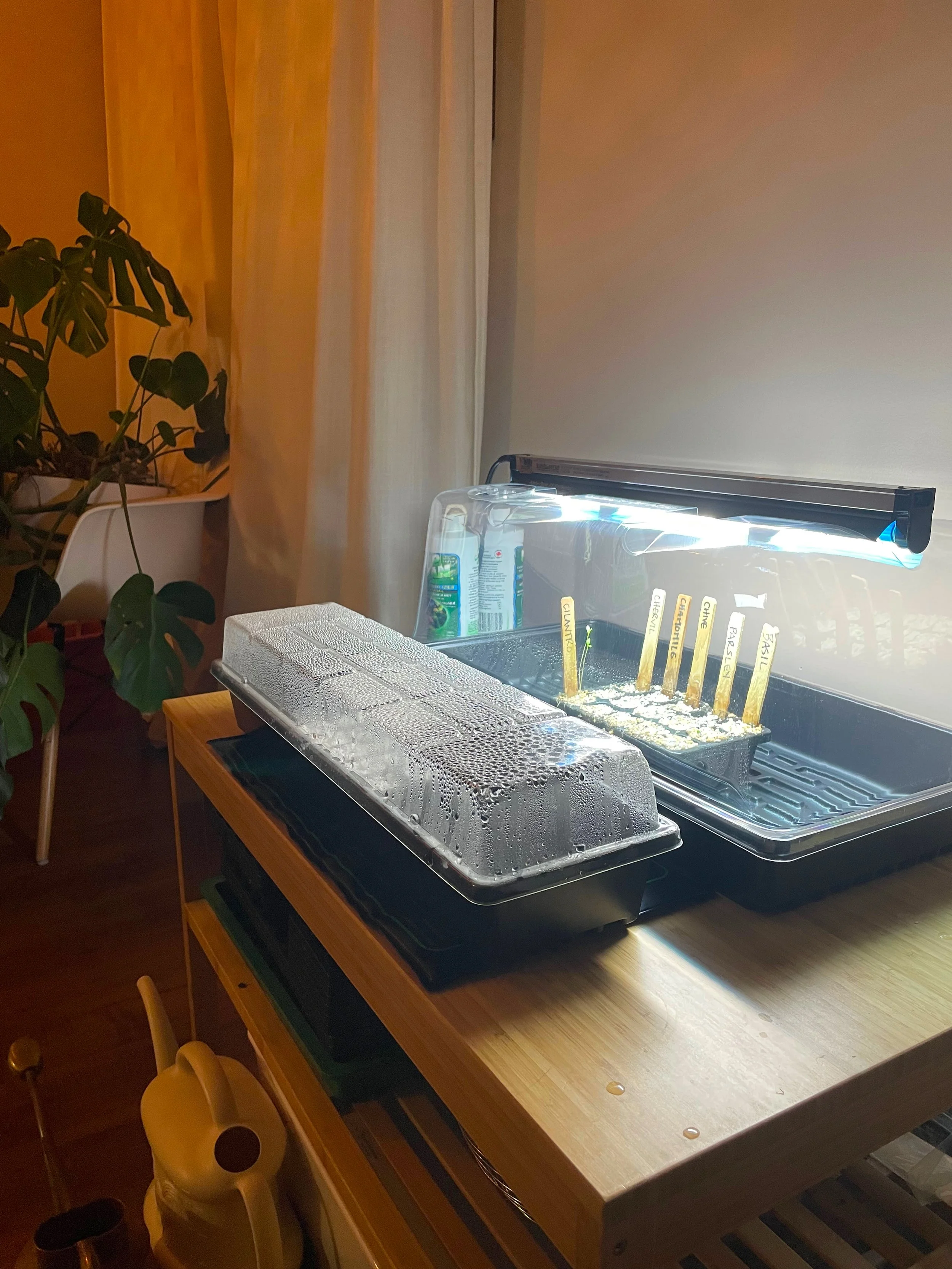Indoor Grow Stations
Average time to read: 2.5 minutesAn indoor grow station is where gardeners start seeds indoors early. Sure, it’s possible you might grow plants there year-round. But if gardeners are chatting about indoor grow stations, chances are this is what they mean.
An indoor grow station is basically just a dedicated place where you can raise seedlings inside until it’s warm enough to transplant them outside. They’re usually set up in February and seed starting gets underway in March.
To put it as simply as possible, seeds needs warmth and moisture to germinate. After germination, they need air circulation, good nutrition, and adequate light.
Every home is different. You might be able to fulfill the requirements we just listed without buying any new supplies. For example, the top of most refrigerators is warm to the touch and perfect for keeping trays of germinating seeds warm!
However, in most cases you’ll need some seed starting equipment. Don’t worry, this doesn’t have to take up a huge area in your home or cost a fortune. To raise healthy seedlings, your grow station should be equipped with these basics:
Module Trays & Seed Starting Mix
You can find these from any garden centre or nursery. Module Trays are useful for separating and transplanting seedlings. (We use Charles Dowding’s CD Trays). Seed Starting Mix is specifically designed for, you guessed it: seed starting. It’s sterile, free from (or extremely low in) fertilizer, and lighter in texture than potting mix.
Seed Starting Mat
Nothing slows germination like the cold. Seed starting mats are designed to be placed under trays of germinating seeds to keep them nice and warm. This is especially important if you’re starting heat-loving crops like Tomatoes and Peppers.
Or some other way to cover germinating seeds to lock in warmth and moisture. Seeds must be kept moist (but not soaked) for the entire germination period.
A Small Fan
After germination, remove the clear plastic dome and give your seedlings a slight breeze with a small fan. Air circulation helps to prevent disease and improves the strength of your plants.
Fertilizer
As your seedlings grow, they will appear obviously crowded in the module trays and require potting up. This simply means transplanting them into a slightly larger container. Think one size up. Begin a weekly feed of water-soluble fertilizer after potting up your seedlings for the first time. Many gardeners use the alliterative Feed Fridays to remind themselves when it is feeding day. Be careful and watch your seedlings. Too much fertilizer will damage your plants.
Potting Mix
A growing medium designed for potting up plants. When your seedlings are ready to be potted up, use a Potting Mix, not the Seed Starting Mix you began with.
Grow Lights
Grow lights provide the full spectrum of light required by plants for photosynthesis. If you are growing shade-tolerant varieties in a south-facing window, you might be able to skip grow lights. However most of us are starting at least some full-sun varieties like Tomatoes and Peppers. Even south-facing windows won’t have enough sun in the winter months when days are short and the sun is weak. You’ll need a grow light.
When space is limited (as it probably is for most of us in the Cottage Corners community), indoor grow stations can be converted neatly into storage shelves for preserves during the rest of the year. We’ve seen some really great examples of these flex spaces on Instagram. Show off yours and be an inspiration to others to start growing food in small spaces too!
***
Links to all our favourite products can be found here.
